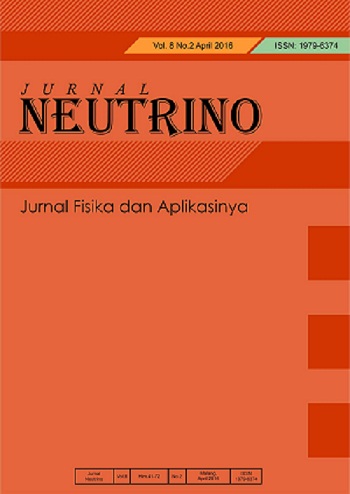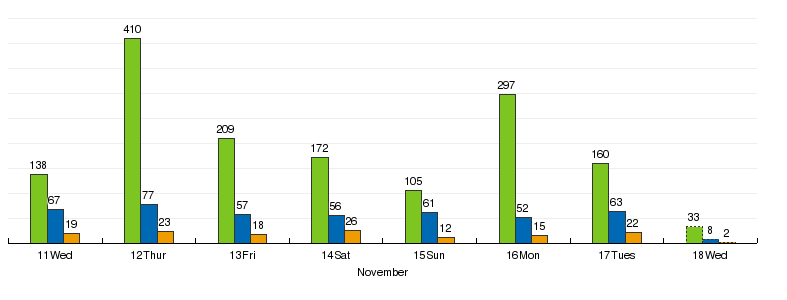QCM SENSOR SENSITIVITY ANALYSIS OF SILVER ELECTRODES COATED WITH LIPID MEMBRANE OLEYL ALCOHOL TOWARD NaCl AND HCl
Abstract
One of the sensors, which is currently being developed is the QCM sensor. The QCM sensor is a sensor that utilizes the frequency change to detect a change in mass due to a test substance. The use of a QCM sensor includes other forms of electronic tongue sensor that can distinguish five basic flavours on the tongue. QCM sensor can also be varied electrodes using various lipid membranes such as electronic tongues to increase sensor sensitivity. This research aims to determine the sensitivity of the QCM sensor before and after coated with the lipid membrane to NaCl and HCl. The sensitivity of the QCM sensor to NaCl is 1.47 Hz/M for uncoated sensor and 0.63 Hz/M for coated sensor, while the sensitivity of HCl is 4.55 Hz/M for uncoated sensor and 4.93 Hz/M for coated sensor. The difference of the results is caused by the nature of ionization of the compound and the amount of concentration used. The result of the sensitivity research shows that the QCM sensor with Oleyl Alcohol lipid membrane is more sensitive to HCl than NaCl.
Keywords
Full Text:
PDFDOI: https://doi.org/10.18860/neu.v11i2.6597
Refbacks
- There are currently no refbacks.
Copyright (c) 2019 Auliya Rahmatul Ummah, Imam Tazi, Muthmainnah Muthmainnah

This work is licensed under a Creative Commons Attribution-NonCommercial-ShareAlike 4.0 International License.
Published By:
Program Studi Fisika Fakultas Sains dan Teknologi Universitas Islam Negeri (UIN) Maulana Malik Ibrahim Malang, Indonesia
B.J. Habibie 2nd Floor
Jl. Gajayana No.50 Malang 65144
Telp./Fax.: (0341) 558933
Email: neutrino@uin-malang.ac.id
This work is licensed under a Creative Commons Attribution-NonCommercial-ShareAlike 4.0 International License
View My Stats










